Hello all, Today I will return to South Estonia by talking about the region of Vooremaa.
This region is not to be confused with Võrumaa or Virumaa, both of which I have already written an article about. This is a physical region which consists of wetlands, lakes and the ridges between them.
https://en.wikipedia.org/wiki/Vooremaa
It also forms a cultural region, consisting of northern Tartumaa and a bit of Viljandimaa.
There are various ways to divide Estonia, but I will take the subject of this article to be the 9 parishes, Kihelkond, shown on the map above. The dotted line being the division between Tartumaa and Viljandimaa. The solid red line is the physical extension of Vooremaa, and the white lines indicate the individual Kihelkond.
18the cent. costume.
The old form of attire includes a chemise, särk, with narrow sleeves and no cuffs. This was embellised with white hemstitching around the neck opening.
The later cut of the chemise is that typical of South Estonia as a whole, with epaulettes and wide sleeves gathered into cuffs. Ornamented with white embroidery, or modestly in red.
A wrap skirt, seelik, was held in place with a sash, vöö. For everyday, this wrap was of a solid color, apparantly of natural wool, with minimal edge decoration. The sash was woven with a design, similar to those found in other parts of South Estonia, and indeed, over a very wide area beyond.
Here is an example in white wool from Kodavere Kihelkond.
Here is a diagram showing how the skirt was wrapped in order to give sufficient room to walk in.
For dress occasions, especially in Põltsamaa, a wide band around the hem would be ornamented with beadwork on a contrasting background, The method of folding shown above would then also serve as a way of showing off a maximum amount of beadwork.
Note that this example has a matching beaded pocket.
These beaded wrap skirts must have once been more widespread, as we have records of them from as far north as Kuusalu Parish.
These were often accompanied by green aprons ornamented with ribbon and galloon.
Later the wrap skirts were replaced by skirts gathered into waistbands, woven of wool, usually in vertical stripes, although occasional examples with horizontal stripes or plaids were also found. Aprons were simple rectangles of linen, possibly with embroidery at the hem, or made of plain or printed bought cloth. This image is from Põltsamaa.
Vests with peplums were worn, which varied by Parish, short jackets and long overcoats were also known.
The headpiece for married women, tanu, at first had long ends which hung down in back. These were sometimes embroidered. The hair would have put up first, it would not hang down as we see in some of these modern photos.
These were later replaced by linen caps with embroidery or lace at the forehead, and bought ribbons hanging in back.
In cold weather, sheepskin caps were worn over the tanu. Short jackets, long overcoats and rectangular wool wraps made up cold weather attire. These were similar to those worn in other parts of South Estonia.





In North Tartumaa, stockings were knitted with openwork designs, in white or colored wool. Here is an example from Torma Parish.
Another from Palamuse Parish.
And also from Äksi Kiheldond.
In northern Viljandimaa, The stockings were also embellished with embroidered designs of black and red.
Traditionally moccasins, pastlad, were laced onto the foot. Later on, leather shoes, and even boots for the men were bought in the city and worn. Stockings were held up by finger braided garters.
Men wore shirts, knickers of leather, linen or wool, jackets of linen or wool, and sometimes vests that matched the jackets. Woven sashes, black overcoats with red cord ornament, and mittens were worn by both sexes. Men wore a couple different kinds of hats. I will now present images from each of the Kihelkond, or Parishes, in this region, from West to East. Pilistvere
The tanu in these western two Kihelkond seem to have been taller than those in Tartumaa.
Põltsamaa
Kursi
Laiuse
Palamuse
ÄksiMaarja-MagdaleenaKodavere
Torma

In Torma in the 3rd quarter of the 19th century, it became popular to wear a chemise of Ukrainian cut with Ukrainian embroidery, as well as kerchiefs tied in the Ukrainian manner on the forehead. I have no information as to why. This was usually worn with horizontally striped skirts, and a typical Estonian sash.
And that concludes this article.
Thank you for reading, I hope that you have found this to be interesting and informative.
Roman K.
ema And that concludes this article.
Thank you for reading, I hope that you have found this to be interesting and informative.
email: rkozakand@aol.com
Tiina Kull et al, 'Rahvarõivad Vooremaa Veerelt', Jõgevamaa, 2014
Age Raudsepp et al, 'Rahvaroivaste V J Palamuse Naine' Tartu, 2014
Age Raudsepp et al, 'Rahvaroivaste V J Palamuse Mees', Tartu, 2013
Reet Alev, 'Rahvaroivaste V J Pilistvere Naine', Tartu, 2017
Reet Alev et al, 'Rahvaroivaste V J Pilistvere Mees' Tartu, 2017
Reet Piiri, 'Suur Mutsiraamat', Healugu, 2017
Eevi Astel, ';Eesti Võõd', Tartu, 1998
Reet Piiri, 'Eesti Talurahva Ülerõivas 19. sajandil' Tartu, 2007
Melanie Kaarma et al, 'Eesti Rahvarõivad' Tallinn, 1981
V. Belitser et al, 'Eesti Rahvarõivad XIX Sajandist ja XX Sajandi Algult', Tallinn, 1957
Maret Tamjärv, 'Eesti Rahvarõivad', Tallinn, 2001
A. Üts et al, 'This Beautiful Land is my Native Country', UNRRA, 1946
Reet Piiri, 'Rahvarõivad Eesti Rahva Muuseumist', Tallinn, 2006
Reet Piiri, 'Rahvarõivas on Norm', Tartu 2002






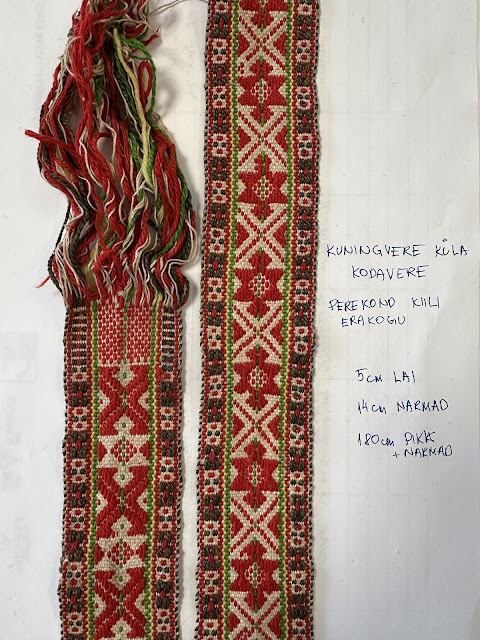









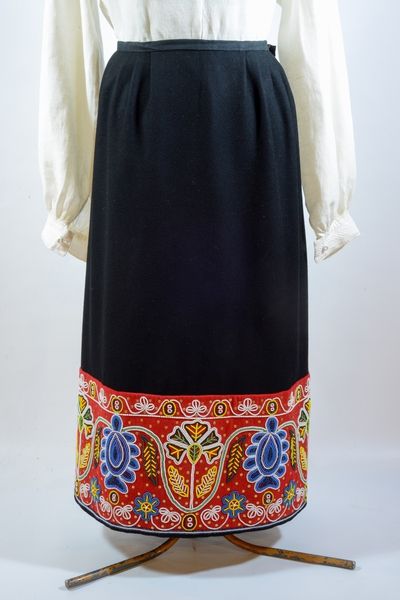


















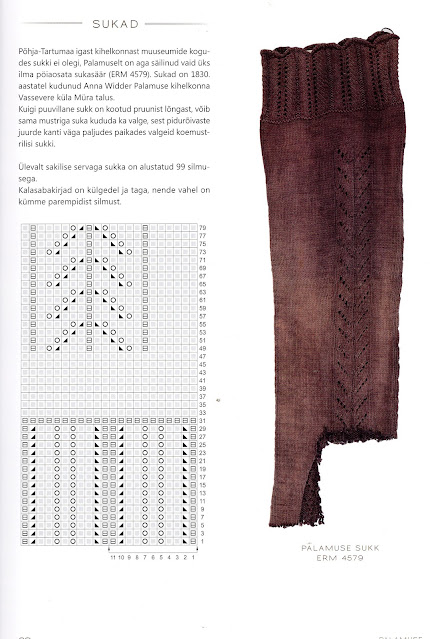






































































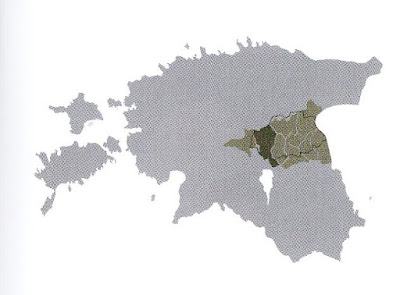




























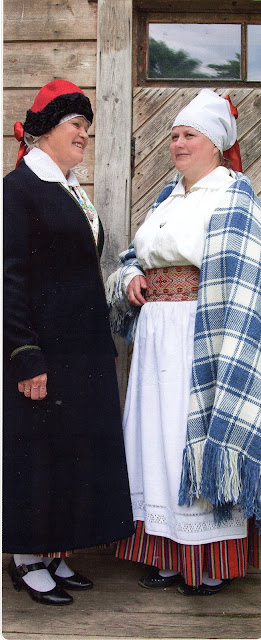








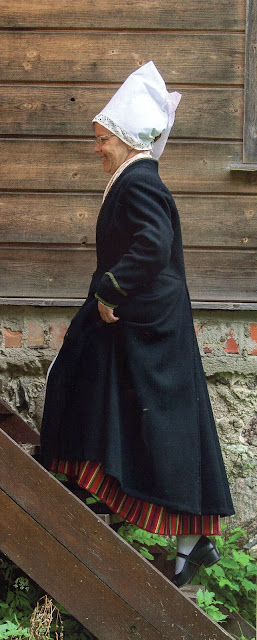

































































































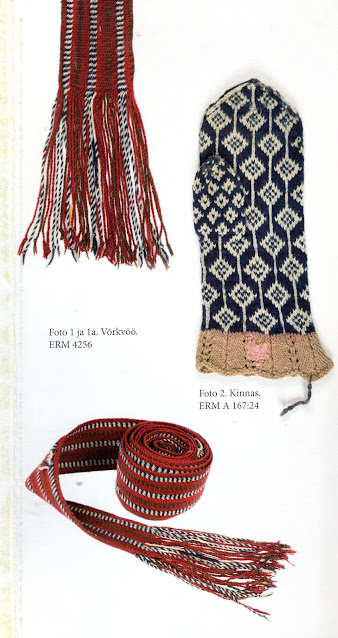






















































































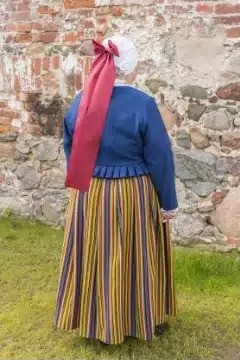











































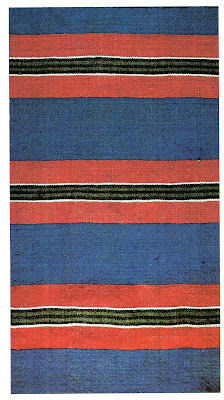



Wonderful!
ReplyDeleteAbsolutely fabulous bead borders in that one parish! And the best plain wrapped skirts yet - no need to hitch up a corner to walk! Thank you, Roman! Charlotte in California
ReplyDelete